Foreign Insulators
by Marilyn Albers
Reprinted from "INSULATORS - Crown Jewels of the Wire", August 1981, page 3
Insulators from Great Britain
It has always seemed rather strange
to me that if a collector wants to bring insulators home from England, chances
are he must go to the Post Office to make his first contact. In fact, a good
number of these insulators (porcelain) are to be found with the incuse letters
G.P.O. alone or in combination with either of the following:
I do not know the
significance of the markings, the hand or the crest; but I would assume they are
the mark of the manufacturers who made them for G.P.O. (General Post Office).
Alex Burnett of Alberta, Canada, recently sent me quite a bit of information on
English insulators, which I would like to share with you. It also explains how
the Post Office got into the act. This is taken from a brochure put out by the
Post Office Telecommunications Museum in Oxford, Oxford being a city 57 miles
northwest of London.
Telegraphs
The practicability of sending messages by the
electric telegraph was demonstrated in 1837, and the first British telegraph
company was formed in 1846. At this time the telegraphs were run by private
companies and even by 1866 there was no great spread of telegraph offices
throughout the United Kingdom. The Telegraph Act of 1868 empowered the
Postmaster General to acquire the country's inland telegraphs and two years
later, in 1870, these were transferred to State ownership.
Little is known about
the early days of telegraphy in Oxford. Occasionally references can be found in
the City's newspapers. Jackson's Oxford Journal on 4th January 1873 refers to
speeches by the City's two M.P.'s being 'flashed along electric wires direct
from Oxford to various parts of the country...' On this occasion 33,000 words
were transmitted.
Telephones
The first electric appliance to which the name
'telephone' was given was invented by Philipp Reis in 1861. This was more successful
in transmitting music than speech. Reis's invention proved to be of no practical
use and it was left to Professor Alexander Graham Bell to produce in 1876 the
first instruments over which an articulate sentence could be spoken. Bell is
thus generally credited with the invention of the telephone although others
contributed greatly to produce the reliable instrument we use today.
On 26th
January 1878 Jackson's Oxford Journal reported that telephones made by an Oxford
man had been installed by the Fire Brigade. These were probably fitted in 1877
the date given in A Record of Fires in Oxford AD 979 to 1870' -- less than two
years after Bell had demonstrated his successful apparatus.
The first telephone
exchange in the United Kingdom was opened in Coleman Street, London, in August
1879. Seven years later, in 1886, the South of England Telephone Company Ltd.,
opened an exchange at Cornmarket Street, Oxford. The company was taken over by
the National Telephone Company Ltd, in 1890 which provided a larger exchange at
5 & 6 Magdalen Street in 1895.
In 1892 the Post Office took over the
telephone trunk system throughout the United Kingdom and by 1895 had established
a trunk exchange at the Head Post Office in St. Aldates to deal with trunk calls
from the National Telephone Company's subscribers exchange in Magdalen Street.
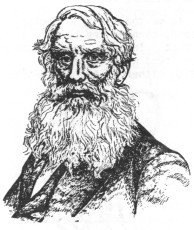
Samuel Finlay Breese Morse |
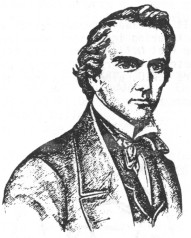
Sir Charles Tilston Bright |
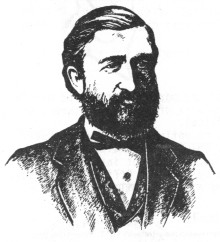
Philipp Reis |
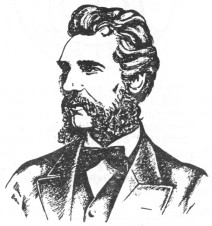
Prof.
Alexander Graham Bell |
On the 1st January 1912 the Post Office took over the
National Telephone Company Ltd., Oxford subscribers' exchange coming under Post
Office administration together with the trunk exchange.
The first automatic
telephone exchange in the United Kingdom was opened at Epsom in 1912. Fourteen
years later, in December 1926, Oxford's first automatic exchange was brought
into service at Pembroke Street. Subscribers could then dial their own local
calls but trunk calls still had to be made via the manual board which the new
exchange incorporated. As the number of subscribers connected to the exchange
grew it became necessary to install satellite exchanges in the suburbs and in
1929 small automatic exchanges were opened at Cowley and Headington. These were
followed by other small automatic exchanges at Summertown in 1931 and Boars Hill
in 1937.
By 1950 the demand for telephone service urged the need for a new
exchange and plans were drawn up for the present exchange which was opened by
the Postmaster General. the Rt. Hon. Ernest Marples, M.P. on 27th April 1959.
Since then several additions have been made to the equipment. Subscriber Trunk Dialing
was introduced in May 1961.
Telecommunications Museum
A
collection of telecommunications exhibits initiated by the present curator in
1963 has grown to such an extent that additional accommodation has had to be
found on two occasions since. Exhibited is a selection of telegraph and
telephone apparatus arranged to illustrate the development of
telecommunications. One of the earliest exhibits is an acoustic sounder with
single needle, often called 'Bright's Bell'. This was developed by Charles
Tilston Bright in 1852.
There are some working exhibits including two early
teleprinters, a rural automatic exchange dating from the 1930's, and a pre-STD
call-office telephone.
A library of historical telecommunications books,
photographs and data is also maintained.
R. A. J. Earl
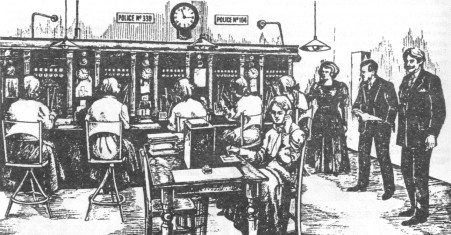
Large Image (267 Kb)
Oxford Trunk Telephone Exchange. c. 1920
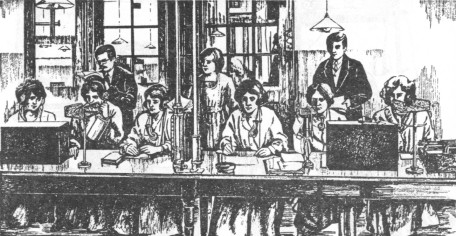
Large Image (254 Kb)
Oxford Telegraph Room. c. 1920

Large Image (155 Kb)
Following are some old pictures Alex included along with the above
information., These were given to him by courtesy of the Post Master General.
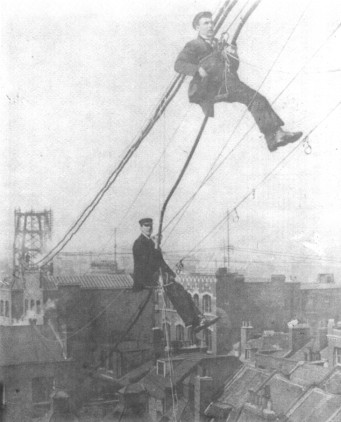
Changing slings on overhead line, London, 1905. |

A lineman at work atop an
English telephone pole. |
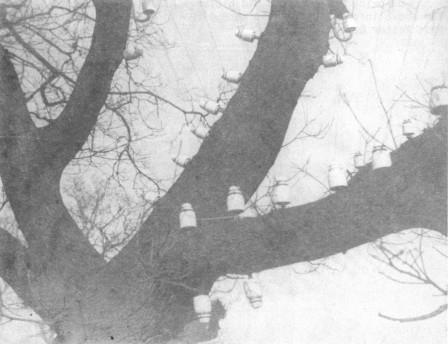
Overhead line attached to tree, close-up view. |

Large Image (406 Kb)
Avenue Exchange, 1907. |
The picture and the drawing below show an
unembossed British glass insulator that Alex has in his collection. This is a
new one to me, and a very attractive one! The drawing was made by Jack Tod from
a shadow drawing that Alex had sent to me. The glass is clear with a tint of
green.
Quoting directly from his letter, Alex says: "I obtained the British
glass insulator from the London Telephone Museum after they had dismantled the
museum and put all their exhibits in storage. Inside the pinhole I found a Post
Office memorandum with the following inscription written on the back: 'Post
Office glass insulator circa 1870'."
The next picture shows (looking from
left to right) the British glass insulator, a red porcelain British rail
insulator, and a brown and a white porcelain each marked G.P.O.
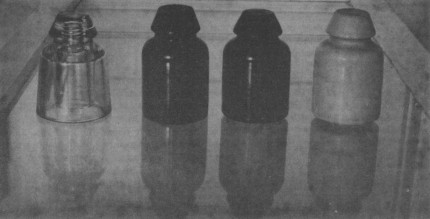
The brown and
the white insulators are a fairly common sight to collectors, but the red
railroad insulator is truly unique! It is a bright fire engine red. Alex
obtained it from a friend in England, who, in turn, got it with the help of a signaling
engineer near Grimsby.
Now to digress just a bit, in order to tie in with
some information that Jack Tod had in his Porcelain News column way back six
years ago in August of 1975. It is about Allied Insulators Ltd. of England, and
this, too, came from Alex Burnett. I'm including a reprint of this here because
it tells about insulator manufacturers who may have made insulators for G.P.O.,
and it shows the Bullers trade mark which likely appears on some of the English
porcelains in your collection. Bullers Ltd. was one of the two companies that
merged to form the present Allied Insulators Ltd., Taylor Tunnicliff and Co.
being the other. Also, since one of the divisions of Allied Insulators Ltd.
makes insulators specifically suitable for railroad electrification, it is
possible that this was the source of the red rail insulator!
=======================Allied Insulators
Limited=======================
Brief History of the Company
ALLIED INSULATORS LIMITED was formed in
1959 by the amalgamation of Bullers Limited with Taylor Tunnicliff & Co.
Limited. two of the largest electrical porcelain manufacturers in the United
Kingdom. It was a fitting merger, for the history of each company follows a
remarkably similar pattern of progress and technical development during the last
100 years.
The story starts in the year 1840 with the foundation of a small
family pottery business by Mr. John Buller in the pleasant Devon village of
Bovey Tracy. The main products of this firm were "spurs and stilts" or
kiln furniture, an important accessory in the firing of pottery ware even today.
and a ready market existed for these items in North Staffordshire where the
large English potteries were already established. It was not surprising.
therefore, that after a few years of development, this family business was, in
1865, moved from Devon to Hanley in Stoke-on-Trent to be at the centre of the
pottery industry.
With the coming of the Electrical Age, the company, using
considerable foresight, commenced production of electrical insulators, and by
1868 was established as a supplier of insulators complete with ironwork.
Development continued rapidly and the Company. working in close cooperation with
an Electrical Engineering firm of the time, was associated in the design and
development of many low tension insulators. The specification for the screw
thread inside a telephone insulator. together with the supporting spindle was
developed by co-operation between the Company and Mr. J. H. Cordeaux, after whom
the screw thread is named. It is interesting to note that this specification is
still in use today. Also a telephone insulator designated T.129 was first
supplied to the British Post Office in 1887 and apart from slight modification,
this same insulator design is still in current use throughout the world.
In 1885
the metal foundry of Jobson Bros. at Tipton in Staffordshire was purchased. and
the new Company, Buller Jobson & Co. Limited was formed. Then in 1890 the
firm became a public company and the name was changed to Bullers Limited.
The other branch of the family was established in 1867 when an engineer by the
name of Thomas Taylor and a potter, William Tunnicliff, went into partnership.
They combined the skills of potting with that of engineering, to specialise in
the manufacture of pottery having a high degree of dimensional accuracy, a
feature uncommon in general pottery at that time. They opened a small factory at
Shelton, near Hanley. Stoke-on-Trent, for the manufacture of ceramic door
furniture, handles, lamp containers, hermetically sealed jars. etc. All items
were associated with metal parts thus requiring a certain amount of precision in
production. It was not long before the factory at Shelton became too small and
production was transferred to larger premises at Eastwood, Hanley. After the
retirement of William Tunnicliff in 1895 a Private Limited Company was formed.
It was towards the end of the 19th century, whilst the electrical age was still
in its infancy. that both Companies embarked upon the specialised production of
insulators. Steady progress followed. Bullers Limited built a new factory at
Milton, just outside the Potteries, and production started in 1920. Taylor
Tunnicliff & Co. Limited erected a new factory at Stone in Staffordshire
where they commenced manufacture in 1922. In 1926, a factory was obtained by
Taylor Tunnicliff at Longton, in the Potteries, and this plant was utilised for
the production of ceramic refractory formers for electric fires, cookers, and
other heating appliances. Yet another factory was obtained in 1928 in Hanley,
known as Electric and Ordance Accessories & Co. Limited, where small turned
ware and die-pressed insulators were produced.
Both the new factories at Milton
and Stone were designed for production of high voltage insulators, and
development and enlargement has been necessary at both plants during the passing
years in order to keep abreast of the demand for ever larger insulators. A
series of extensions, which took place at Stone and were completed in 1951,
doubled the original output whilst the most recent expansion programme at Milton
was only completed in 1967, after the two companies had amalgamated.

Alex also
enclosed the above postal cancellation used by the company, and it should be of
interest to collectors because of their trademark in it.
The logo used by Allied
Insulators Ltd. is shown at the right. Keep this in mind, since it wouldn't be
unusual for insulators to turn up some day with a marking based on this logo.
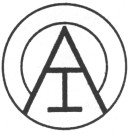
================= Allied Insulators Limited
================
Allied Insulators Limited Today
THE FOUNDERS of
Allied Insulators Limited were pioneers in the manufacture of electro-ceramics,
and a vast resource of knowledge and experience extending back over more than
100 years has been accumulated. The amalgamation of Bullers Limited with Taylor
Tunnicliff & Co. Ltd. enabled this knowledge to be shared, with the result
that the new company is well equipped to meet the demand for insulators needed
for the ever higher transmission voltages that are being developed in all parts
of the world.
In the early 1970's a programme of standardization and
modernization was introduced and this involved the closing of two of the older
factories in Hanley. A new plant was acquired at Chessington near London, where
special ceramic components were produced for industrial purposes. Later it was
found necessary to move this latest plant to a new and larger site at Ruabon,
near Wrexham on the border with Wales. At Ruabon, Allied Insulators Limited are
able to specialise upon the manufacture of technical ceramic components which
modern industry is demanding.
Allied Insulators Limited now produce ceramic
components in many shapes and sizes to meet the varying needs of industry. The
range extends from items measuring only a few millimetres, to insulators large
enough to satisfy the ever increasing demands of the high voltage electrical
systems being installed throughout the world.
The Group now controls five
ceramic factories where specialised manufacture can be undertaken to meet the
various requirements existing within industry for ceramic components. There is
also a foundry for malleable and grey iron fittings.
The production of such a
wide variety of components calls for an equally wide range of skills and
equipment. To ensure maximum efficiency and specialization Allied Insulators
Limited have divisionalised their activities into four groups as follows :----
- Allied Insulators High Tension Products.
- Allied Insulators Low Tension Products.
-
Bullers Engineering.
- Unilator Technical Ceramics.
Allied Insulators Limited is
well equipped to maintain their position in the vanguard of the manufacture of
electrical insulators and other ceramic components, and to offer a world wide
service to industry.
Following is a picture showing six white porcelains
from my own collection, which either have the incuse words BULLERS LTD. LONDON,
or which bear the Bullers trademark enclosed in a circle with the words
"Bullers Ltd." included.

It is very likely that insulators marked with
"Bullers Ltd." on them were manufactured before the merger in 1959;
but that afterward Allied Insulators Ltd. continued to use the Bullers trade
mark, but dropped the name "Bullers" and substituted "Made in
England".
| 